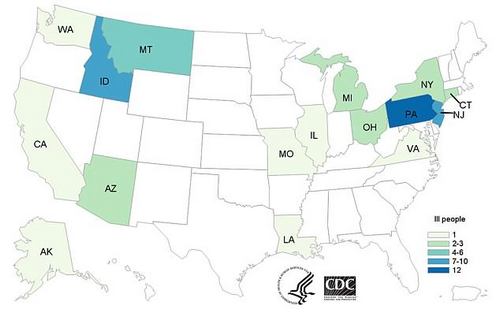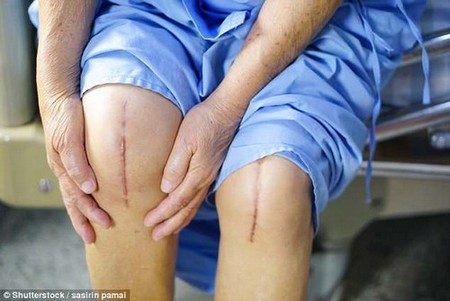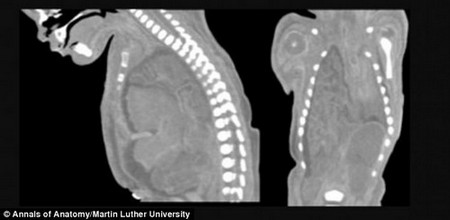Thirty-seven more people have been infected with E. coli from pre-cut romaine lettuce as the outbreak has reached nine more states, new reports have revealed.
There have been a total of 50 infections and 31 hospitalizations across 16 states as of Wednesday, according to an update from the Centers for Disease Control and Prevention.
Last week the bacteria was traced back to bags of chopped romaine lettuce from Yuma, Arizona.
Idaho and Pennsylvania have reported the largest number of cases, with 10 and 12 respectively, but the especially nasty strain has also been found in Alaska, Arizona, California, Connecticut, Illinois, Louisiana, Michigan, Missouri, Montana, New Jersey, New York, Ohio, Virginia and Washington.
The outbreak of E. coli from contaminated romaine lettuce has continued with 53 people infected and 31 hospitalized
‘Before purchasing romaine lettuce at a grocery store or eating it at a restaurant, consumers should confirm with the store or restaurant that it is not chopped romaine lettuce from the Yuma, Arizona growing region,’ the CDC statement said.

‘If you cannot confirm the source of the romaine lettuce, do not buy it or eat it.’
The specific strain causing the illnesses reported beginning in mid-March has been identified as Shiga toxin-producing E. coli O157:H7.
E. coli bacteria are typically found in foods such as undercooked meat or raw vegetables that have been contaminated with fecal matter.
Scientists reveal patch that can detect E. coli
Last week researchers in Canada published a study on a patch that could alert consumers to the presence of potentially harmful bacteria such as E. coli.
When placed on food packaging, sensors in the patch can detect dangerous pathogens and send a signal to users’ phones warning them it may not be safe to eat.
The researchers claimed that the device would be inexpensive and easy to produce on a large scale, but it is unclear when it may be available.
It can also be transmitted if a person who is carrying the bacteria doesn’t wash their after using the bathroom and then processes or prepares food.
Symptoms including bloody diarrhea, severe stomach cramps and vomiting commonly appear three to four days after ingesting the harmful bacteria and usually clear up within a week.
However, in five to 10 percent of cases the strain can lead to a type of kidney failure called hemolytic uremic syndrome.
According Wednesday’s CDC report, five people have reportedly developed HUS.
The CDC has said these complications are is more common older adults, young children and those with weakened immune systems.
Signs of HUS include fever, abdominal pain, pale skin tone, fatigue and irritability, small, unexplained bruises or bleeding from the nose and mouth, and decreased urination.
In January a larger E. coli outbreak also linked to romaine lettuce was reported in 13 states, resulting in 58 hospitalizations and one death.

Sixteen states have reported cases involving the nasty strain of bacteria, the CDC has revealed



